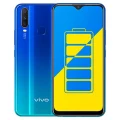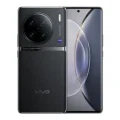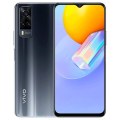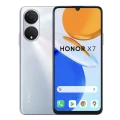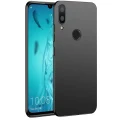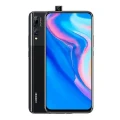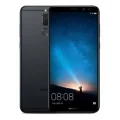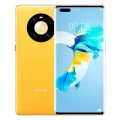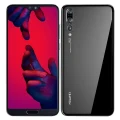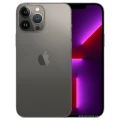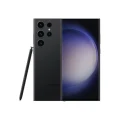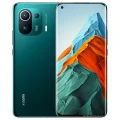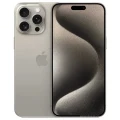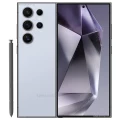Vivo Y71
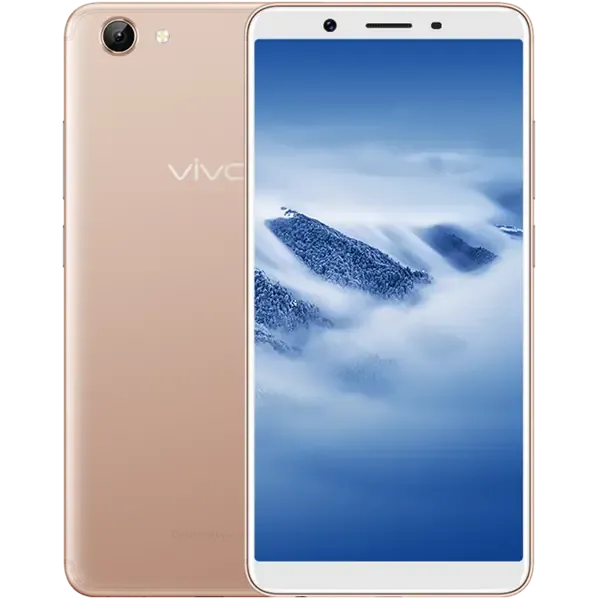


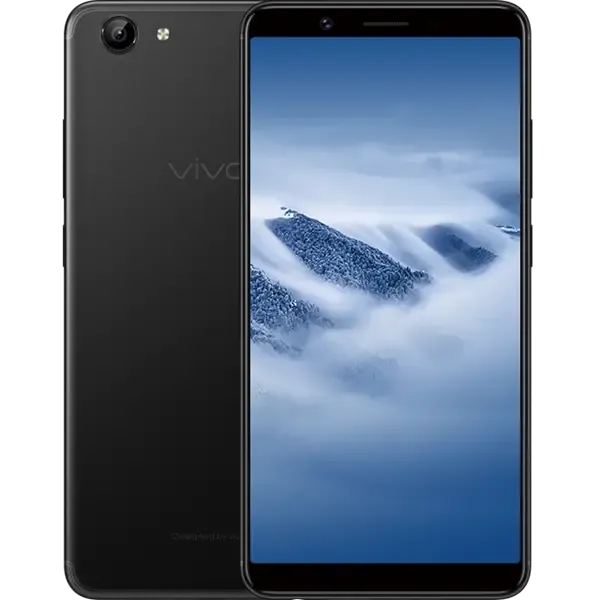
Vivo Y71 Price in Bangladesh
The Vivo Y71 is officially priced at BDT 9,990 in Bangladesh for the 2GB RAM + 16GB storage variant. It features a 6.0-inch HD+ display with a resolution of 720 x 1440 pixels and an 18:9 aspect ratio. Powered by the Qualcomm Snapdragon 425 chipset, it includes a quad-core 1.4 GHz Cortex-A53 CPU and an Adreno 308 GPU.
For cameras, the device sports a 13 MP rear camera with PDAF and a 5 MP front camera for selfies. The 3360mAh battery provides all-day power, and it runs on Android 8.1 Oreo with the Funtouch 4 interface.
Other highlights include its Gorilla Glass 3 protection, aluminum build, and connectivity options like Wi-Fi, Bluetooth 4.2, GPS, and FM radio.
Specifications
General
| Model | Vivo Y71 |
| Status | Available |
| Official price | 9990 |
Design
| Dimensions | 155.9 x 75.7 x 7.8 mm (6.14 x 2.98 x 0.31 in) |
| Weight | 150 g (5.29 oz) |
| Colors |
Black, Gold |
Network
| Technology | GSM / HSPA / LTE |
| 2G Network |
GSM 900 / 1800 - SIM 1 & SIM 2 |
| 3G Network |
HSDPA 850 / 900 / 2100 |
| 4G Network |
LTE band 1(2100), 3(1800), 5(850), 8(900), 38(2600), 40(2300), 41(2500) c |
| GPRS <strong>GPRS</strong> (General Packet Radio Service) is a packet oriented mobile data service on the 2G and 3G cellular communication system's global system for mobile communications (GSM), Generally, GPRS is used for the purpose of wireless data transfer, such as sharing pictures and videos or browsing the Internet via a mobile phone connection. | |
| EDGE <strong>EDGE</strong> (Enhanced Data GSM Environment) is a wireless network technology generally considered the next step in the 2G network offers data transfer rates up to four times faster than ordinary GSM networks, Generally, EDGE is used for the purpose of wireless data transfer, such as sharing pictures and videos or browsing the Internet via a mobile phone connection. | |
| Speed | HSPA, LTE |
Display
| Display Type <strong>Display Technology => </strong> A number of display technologies and types used in mobile phones => TFT (Thin Film Transistor), IPS (In-Place Switching), OLED (Organic Light Emitting Diode), AMOLED (Active-Matrix Organic Light-Emitting Diode), Super AMOLED (an even advanced version of AMOLED), Resistive Touchscreen (Resistive touchscreens contain two layer of conductive material with a very small gap between them which acts as a resistance), Capacitive Touchsceen (Capacitive touchscreen technology consists of a layer of glass coated with a transparent conductor) | IPS LCD capacitive touchscreen, 16M colors |
| Size | 6.0 inches, 92.9 cm2 (~78.7% screen-to-body ratio) |
| Resolution | 720 x 1440 pixels, 18:9 ratio (~268 ppi density) |
| Features |
MP4/H.264 player MP3/WAV/eAAC+/FLAC player Document viewer Photo/video editor |
Camera
Main camera
| Camera Setup | Single |
| Primary <strong>Camera</strong> is able to capture photographs and usually videos, The most important characteristics of a camera are the resolution (measured in megapixels), lens focus type (fixed or automatic), higher megapixel cameras are known to capture higher quality photos, but not always a good measurement of the photos quality. |
13 MP, PDAF, f/2.2 |
| Features |
LED flash, HDR |
| Video | 1080p@30fps |
Selfie camera
| Camera Setup | Single |
| Primary <strong>Camera</strong> is able to capture photographs and usually videos, The most important characteristics of a camera are the resolution (measured in megapixels), lens focus type (fixed or automatic), higher megapixel cameras are known to capture higher quality photos, but not always a good measurement of the photos quality. |
5 MP, f/2.2 |
Hardware
| Chipset <strong>Chipset</strong> is a group of integrated circuits designed to perform one or a more dedicated functions, often with real time computing constraints, Popular smartphones are equipped with more advanced embedded chipsets that can do many different tasks depending on their programming. | Qualcomm MSM8917 Snapdragon 425 (28 nm) |
| CPU <strong>CPU</strong> (Central Processing Unit) mostly known as processors, CPU processes instructions in order to carry out certain functions that make your device operate properly. Processors are often described as the brain of computers, smartphones and tablets, Smartphones and tablets rely on processors to carry out their every task, Processors are an incredibly important factor in selecting any type of computing device, including your smartphone. | Quad-core 1.4 GHz Cortex-A53 |
| GPU <strong>GPU</strong> (Graphics Processing Unit) is a single-chip processor designed to rapidly manipulate and alter memory to accelerate the creation of images in a frame buffer intended for output to a display, This includes things such as lighting effects, object transformations, and 3D motion. | Adreno 308 |
| RAM (Memory) <strong>RAM</strong> (Random Access Memory) is a type of computer memory that can be accessed randomly, any byte of memory can be accessed without touching the preceding bytes that allows information to be stored and accessed quickly from random locations. RAM is the most common type of memory found in computer systems, smartphones, tablets and other electronic devices. | 3 GB |
| Internal Storage <strong>Internal Storage</strong> is a data storage space (flash memory) mostly used in smartphones, tablets and other electronic devices where operating system, apps, music, photos, videos, files and other user data Is stored. | 16/32 GB |
| Sensors <strong>Sensors</strong> are electronic components that detects and responds to some type of input from the physical environment. The specific input could be light, heat, motion, moisture, pressure and location, The output is generally a signal that is converted to use in computing systems, a location sensor, such as a GPS receiver is able to detect current location of your electronic device. |
Accelerometer, gyro, proximity, compass |
Connectivity
| Bluetooth <strong>Bluetooth</strong> is a wireless communications technology for exchanging data between mobile phones, headsets, computers and other network devices over short distances without wires, Bluetooth technology was primarily designed to support simple wireless networking of personal consumer devices. | 4.2, A2DP, LE |
| Infrared <strong>Infrared</strong> connectivity is an old wireless technology used to connect two electronic devices. It uses a beam of infrared light to transmit information and so requires direct line of sight and operates only at close range. | |
| USB | microUSB 2.0, USB On-The-Go |
| GPS <strong>GPS</strong> The Global Positioning System is a satellite-based radio navigation system, GPS permits users to determine their position, velocity and the time 24 hours a day, in all weather, anywhere in the world, In order to locate your position, your device or GPS receiver must have a clear view of the sky. | Yes, with A-GPS, GLONASS |
| NFC <strong>NFC</strong> (Near field communication) is a set of standards for smartphones and similar devices to establish peer-to-peer radio communications with each other by touching them together or bringing them into proximity, usually no more than a few inches. |
Battery
| Battery Type <strong>Battery Type => </strong> Cell phones run on various kinds of batteries depending on the manufacturer, phone size or shape and features. There are basically four types of cell phone batteries => Lithium Polymer, Lithium Ion, Nickel Metal Hydride and Nickel Cadmium. | Non-Removable Li-Po |
| Capacity <strong>Battery Capacity</strong> is a measure (typically in Amp-hr) of the charge stored by the battery, and is determined by the mass of active material contained in the battery. The battery capacity represents the maximum amount of energy that can be extracted from the battery under certain conditions. | 3360 mAh battery |
Vivo Y71 Review: A Budget Smartphone With Surprising Features
Smartphones that combine affordability with reliable performance have gained traction in recent years. Vivo’s Y71 finds its place in the mid-budget smartphone market, appealing to tech enthusiasts, casual smartphone users, and gamers who don’t want to break the bank.
Does the Vivo Y71 deliver what it promises, or does it miss the mark in key areas? This detailed review explores everything from its design to performance, multimedia features, and more.
Design and Build
The Vivo Y71 adopts a minimalist and clean design, perfect for those who prefer practicality over flashy aesthetics. Its slim profile (at 7.8mm thickness) and lightweight body (150g) make it comfortable to hold, even during prolonged use.
The phone features a plastic build with a matte finish, which gives it a premium look despite its lower price point. However, like many plastic-backed phones, it’s prone to minor scratches, so a protective case is recommended.
The button placement is well-thought-out, with the volume rocker and power button easily accessible on the right-hand side. Vivo has ensured a good balance between design aesthetics and functionality for the Y71, although it lacks the finesse of metal or glass-backed phones.
Display and Multimedia
For a budget smartphone, the Vivo Y71 impresses with its 6.0-inch HD+ IPS display (1440×720 pixels), offering decent clarity and sharp colors. While it doesn’t boast a Full HD experience, the resolution is more than sufficient for everyday use like browsing, streaming videos, and scrolling social media.
Its narrow bezels and 18:9 aspect ratio add to the immersion by making the screen look larger than it is. Watching YouTube or Netflix feels satisfying, though it may struggle slightly with darker scenes due to limited contrast ratios.
When it comes to audio, the single bottom-firing speaker offers decent sound output but lacks depth. For a better experience, headphones are recommended, especially for music and gaming.
Where the Y71 shines is delivering consistent multimedia usability at its price point. Gamers will be able to appreciate casual gameplay visuals, though you’re unlikely to get high-end graphics.
Performance
Under the hood, the Vivo Y71 features a Qualcomm Snapdragon 450 processor coupled with 3GB/4GB RAM options. While this chipset is mid-tier, it’s largely targeted at budget users, and when paired with Vivo’s optimizations (FunTouch OS 4.0), it provides smooth performance for day-to-day activities such as browsing, messaging, and light multitasking.
Casual gamers will be relatively pleased. Titles like PUBG Mobile Lite and Call of Duty Mobile run reasonably well at low settings with minimal lag or frame drops. However, heavier 3D games struggle to maintain consistent performance, so hard-core gamers may need to temper expectations.
There are compromises when multitasking—the Vivo Y71 manages simultaneous apps modestly and may occasionally reload apps when running intensive tasks. It’s a commendable performer but clearly outpaced by higher-tier smartphones.
Camera Quality
Photography enthusiasts shouldn’t expect flagship-level performance, but the Vivo Y71 holds its own in this price segment. The phone comes with a rear 13MP camera and a 5MP front camera.
Images taken in good lighting conditions are sharp and capture vivid colors. The HDR mode especially helps balance out highlights and shadows. However, you may notice a loss of detail in low-light or indoor settings, resulting in grainy photos.
The selfie camera, while basic, is equipped with Vivo’s AI Face Beauty mode, which smoothens skin and adjusts brightness. It’s a neat addition for social media-ready selfies but lacks realism when used heavily.
Video recording capabilities are on par with other phones in its category, offering 1080p resolution. Although stabilization isn’t the best, casual users will find it adequate for quick clips.
Battery Life
Battery performance is one of the strongest aspects of the Vivo Y71. Packed with a 3,360mAh battery, it easily lasts a full day with moderate usage, including browsing, social media, and casual streaming.
Vivo’s power management further optimizes battery life, allowing up to 12 hours of mixed usage—perfect for users who need reliable endurance.
One downside is the lack of fast charging. Charging with the supplied micro-USB cable (still standard in most budget devices) takes over two hours to go from 0% to 100%. For users seeking faster recharges, this may feel sluggish.
User Interface and Features
The Y71 ships with FunTouch OS 4.0 based on Android 8.1 Oreo. While the OS is functional and easy to use, it mimics elements from iOS, which may take time for Android purists to adjust to.
App icons are slightly cartoonish, but the system runs smoothly without many glitches. Built-in features like the Face Unlock (reliable under good lighting conditions) add convenience despite the lack of a physical fingerprint scanner.
Some useful software features include Smart Split Screen (for multitasking) and a Game Mode that blocks unnecessary notifications during intense gaming sessions. These may sound minor, but they improve the user experience significantly.
Price and Value
At the time of writing, the Vivo Y71 is priced around $150-$200, making it an attractive choice for budget-conscious buyers.
When compared to competitors like the Xiaomi Redmi 6 or Realme C1, it holds its ground in terms of design and user interface, but falls behind slightly in gaming performance and camera quality.
For its price, the Vivo Y71 delivers excellent value for casual tech users, students, or anyone looking for a secondary device. However, for heavy multitaskers or hard-core mobile gamers, this may not fully meet expectations.
Is the Vivo Y71 Worth It?
The Vivo Y71 offers an attractive mix of modern design, decent performance, and long battery life at a wallet-friendly price. While it doesn’t outshine its competitors in every category, it carves a niche for itself by offering great ease of use and dependable functionality.
Casual smartphone users and film lovers looking for a budget-friendly all-rounder will likely appreciate the Y71. However, those with higher performance demands (like gamers and photo enthusiasts) may want to explore alternatives.
The Vivo Y71 proves that you don’t need to spend a fortune to access the essentials of a modern smartphone. It’s a testament to Vivo’s commitment to bridging top-tier features with affordability.
